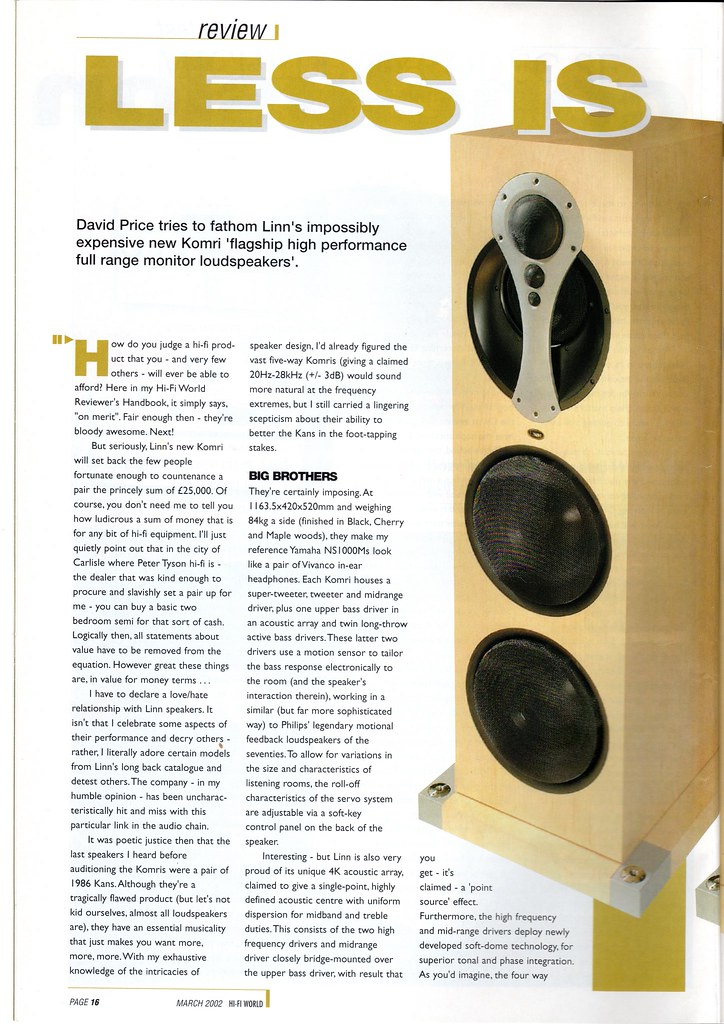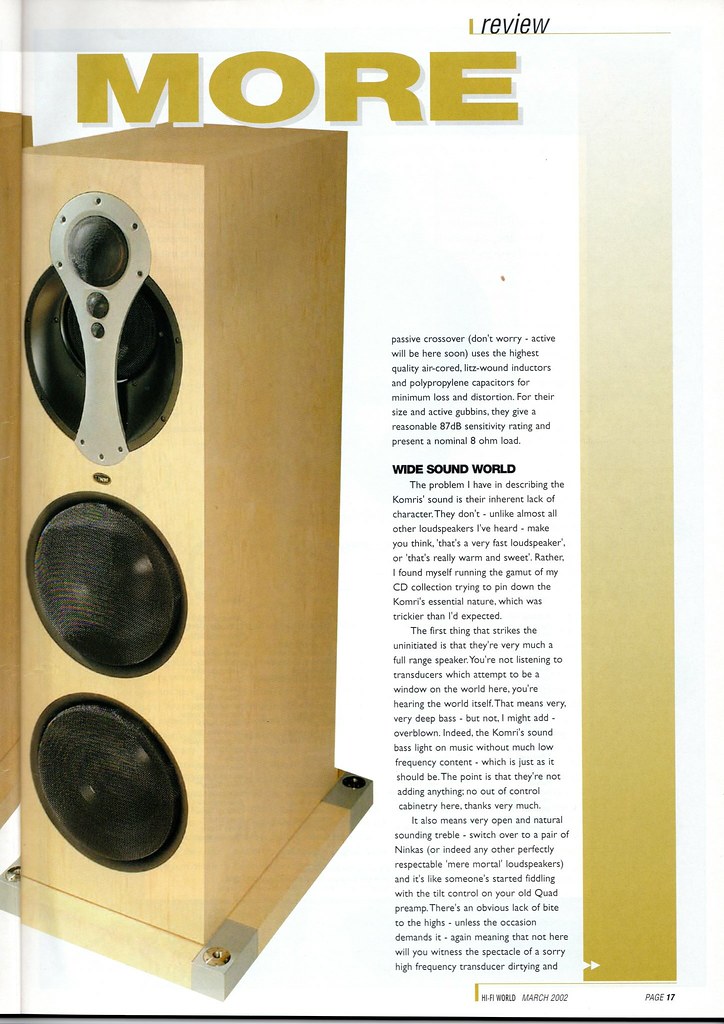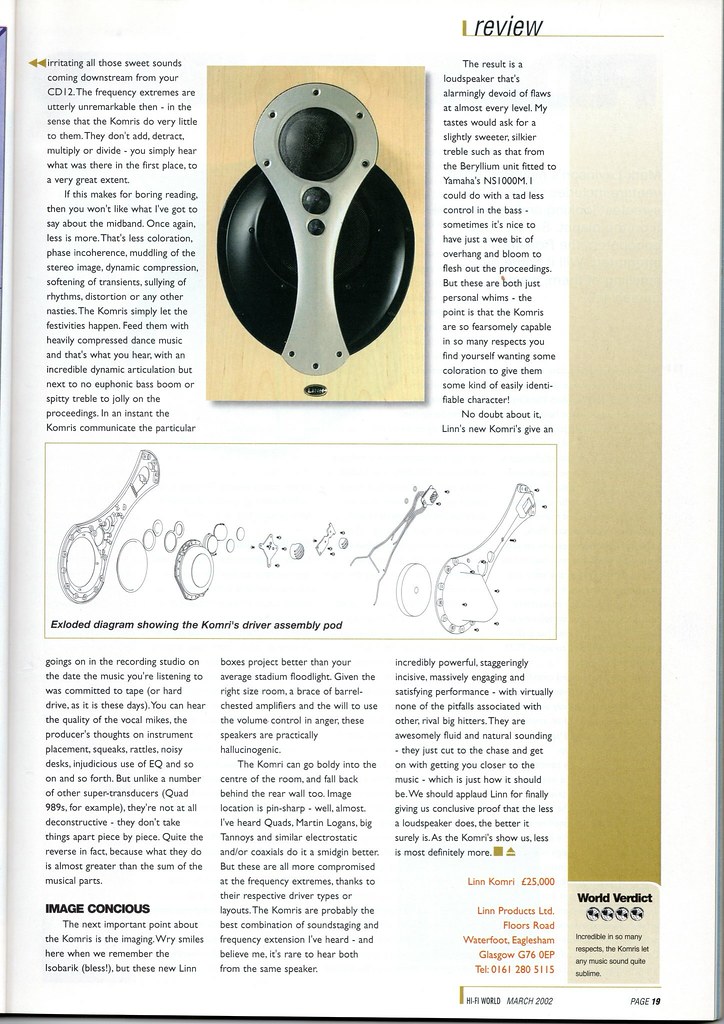Published here mainly for the interest of the Linn forum user community. Published with the kind permission of Noel Keywood at HiFi World.
Click on the image, then right click and "view image" to see the pages in high resolution.
My own thoughts on listening to Komris are here: http://audiophilemusings.blogspot.co.uk/2014/02/a-view-from-top.html
"What a refreshingly honest blog about listening to music through hi-fi. So happy to see views based upon the enjoyment of music rather than so-called sound 'quality'." - Peter Comeau, Director of Acoustic Design at Mission / Wharfedale
Friday 30 September 2016
Tuesday 13 September 2016
Exaktbox Comparison. Something to Consider When Choosing Which Exaktbox To Use: Stereo or Dual-Mono?
EDIT, 2018: PLEASE NOTE THAT THIS POST WAS WRITTEN PRIOR TO THE /1 UPGRADES FOR AKURATE AND KLIMAX EXAKTBOXES - THE "KATALYST" VERSIONS. THE FOLLOWING ARTICLE RELATES TO /0 EXAKTBOXES AND IS NOT RELEVANT TO /1 EXAKTBOXES
How exact is Exakt? Well, you’d think, from the branding, that it would be as exact as Linn could make it. A recent online “conversation” revealed that all is not exactly as it might seem. And its all down to processing power.
How exact is Exakt? Well, you’d think, from the branding, that it would be as exact as Linn could make it. A recent online “conversation” revealed that all is not exactly as it might seem. And its all down to processing power.
A quick review of Exakt – it’s Linn specific set of processes
in the digital world that changes the signal being fed to a digital to analogue
converter (DAC) specific to each driver in the speakers to allow the sound
coming out of that driver to correct for room nodes (like boominess), for
manufacturing tolerances (in the higher range of Linn speakers), time for the
signal to travel to the listening position, to make sure that driver only gets
the part of the frequency range particular to that driver, to correct for phase
alignment issues between drive units at the crossover point and to correct for
phase errors within the drive unit itself.
All very much in real time (it takes about 45ms). Clever stuff.
But that takes a fair amount of processing power, something that happens
inside a Linn Exaktbox which takes a feed from the Linn digital streamer /
pre-amp, does all that processing and feeds the signal to multiple DACs – one
per speaker driver – which then feeds to the power amp per driver and then onto
the speaker driver.
So all of the above, applied to a pair of speakers that have
3 drivers per speaker (known as 3-way), requires 6 channels of processing and
DACs. As this is a particularly good
“use case” to illustrate the differences between stereo filters and dual-mono
filters, that’s what I’ll step through in this post.
Linn make an Exaktbox that has 6 channels (in fact, there
are 2 of these, one at Akurate level, the other at Klimax level). So, that it makes it very easy to choose an
Exaktbox to suit a pair of 3-way speakers right? 3 drivers x 2 speakers = 6 channels. So Exaktbox 6 (Akurate or Klimax level) will
do the job. Well yes. And no.
Why not? Well, we need to take a
look at what’s in each of those boxes.
Exakt processing is done in a processor called an FPGA, and the number
of FPGAs you get per Exaktbox varies according to which version in use. Take a look at the diagram below. On the left, Exaktbox 6 (Akurate or Klimax,
for this discussion they’re identical on the Exakt processing side), and on the
right the Akurate Exaktbox 10 (actually called Akurate Exaktbox without the 10,
but lets not get into branding choices here!).
Clearly, there are 6 DACs in the Exaktbox 6 and 10 DACs in the Exaktbox
10. But, more crucially for this post,
the Exaktbox 6 has 1 Exakt processor, the Exaktbox 10 has 2 Exakt processors. Note that these diagrams are simplified for the purposes of illustrating this comparison and test (for those who are really interested, in Exaktbox 6 there is a "Master" processor and 1x "Slave" processor, in the Exaktbox 10 there is a "Master" processor and 2x "Slave" processors).
Now, the Exaktbox 10 has to be capable of running 2 speakers
of up to 5 drivers per speaker (5-way).
So, for the sake of argument, lets assume that a 5-way speaker will use
100% of each Exakt processor in the Exaktbox 10. This might not be true, but it keeps the
discussion relatively simple – believe it or not! So, with 2x mono Exakt
filters – one mono filter per speaker – both Exakt processors will be fully
busy:
But we’re talking in this post about 3-way speakers, which
probably need less processing power than a 5-way speaker filter. Again, using an assumption that is purely
that, I’m going to say that a 3-way speaker will consume 3/5s of the processing
power of a 5-way speaker. So then we
have the 2 Exakt processors in an Exaktbox processor, running a pair of mono
3-way filters might look a bit less busy than the above example.
Now, if we take those left and right Exakt filters out of
the Exaktbox 10 and put them into the Exaktbox 6’s single Exakt processor, what
happens? Well, it gets a bit over
full. I know these are all
approximations and assumptions, but its just to illustrate what’s going on
here. The principle applies, regardless
of the precise percentages of capability.
So we then have an Exaktbox 6 single processor that’s too full, you can
see here that stacking up the 2x mono filters into the single processor doesn’t
fit:
So what to Linn do to make it possible for an Exaktbox 6 to
support 2x 3-way full range speakers? Well, they
don’t run the 2x mono filters like the Exaktbox 10, they run a cut-down stereo
filter. In order to achieve this, the
stereo filter does less complex (and therefore less accurate) processing so it
will squeeze into the space available in a single processor:
And what does that mean for sound? Well, it’s less accurate, as you might
expect. Hence, Exakt is sometimes less
exact than it might be.
Experiment
Its taken a while for this experiment to happen in Musings’
listening room. Why? Well, it took a while for Linn to get around
to releasing the “dual mono” Exakt filters for the PMCs amongst others such as
Linn’s own Keilidhs. So if you were
running an Exaktbox 6 or an Exaktbox 10 for PMCs back in May 2016 (like me),
then you’d not hear much of a difference between them as they were both running
the compromised stereo Exakt filters. In
fact, the Exaktbox 6 sounded slightly better due to the greater space and
better circuit layout inside the box.
But this was a small difference and has nothing to do with the Exakt
filters in use.
Let’s be clear here, even the compromised stereo Exakt
filters, with my PMC Twenty.26 speakers, Exakt brought a step change in
performance to the system. See my review here of my first impressions of these speakers with Exakt. Those impressions were written with stereo
Exakt filters in an Exaktbox 10, per the diagram below:
But a few weeks back, Linn finally released the dual-mono
Exakt filters for the PMCs. So the
system was set up with stereo filter in the Exaktbox 6 and dual-mono filters in
the Exaktbox 10. As below:
Everything else in the system was kept the same – same
Akurate Exakt DSM source, same Chord C-Stream cable for the Exaktlink, same 6x
Linn silver interconnects and same 6x channels of Akurate power amplification
and speaker cables. The same SPACE
Optmisation settings were applied too, leaving only the stereo vs dual-mono
Exakt filters being the only difference between the 2 set ups. Yes, there’s the better layout of the
circuitry in the Exaktbox 6 to allow for, but earlier testing has shown that as
being fairly minor (worth having, but not worth trading equipment for, if you
already have an Exaktbox 10, IMHO).
Although it takes about 10 minutes to swap all the
interconnects over between the 2 boxes (and power up each drive unit one at a
time, starting with bass and working up the frequency range to ensure all the
connections are correct), its pretty easy to hear the benefits that dual-mono
filters bring. As is often the case, its
not that easy to describe, especially given how good the stereo Exakt filters
are. But lets say there’s just a lot more of everything without adding any
clutter at all. What you think is very
stable imaging, becomes even more stable, wider and deeper too. What you think is lots of space between and
around instruments is a good bit better defined. Bass appears to go a bit deeper, but room
nodes are not excited any more than they were.
Some sounds evolve with even greater texture through the lifetime of a
note. There’s another improvement in the
flow and effortlessness of listening to the music and following the tune –
without thinking about it. Are there any
downsides? Not that I’ve noted, its all
good. At least its all good if you don’t
think too hard about the financial implications, or the idea that, with even
greater processing power in future iterations of Exaktboxes, that there might
be yet more to come. But let’s not go
there just now!
So what is the conclusion?
Well, Exakt isn’t always as Exakt as it could be. And if you’ve got 3-way full range speakers like me, the
Exaktbox 6 isn’t necessarily the “lower cost” route it might’ve been, as it
involves a level of compromise. But its
also worth saying that the benefit brought by dual mono filters is worth having
– if I knew this when starting out with Exakt, I would’ve saved up for the
Exaktbox 10 over the Exaktbox 6. It just
so happened that the ex-dem Exaktbox available to me was the 10 channel version
and it was part of the purchasing choice for a different reason – the option to
go to the 5-way Akubariks, had I wanted to do that at some point in the
future. What does that mean for choosing
an Exaktbox for other systems? Well here’s
the run down, as it stands at the time of writing, for a stereo pair of speakers:
- 1x Majik Exaktbox-i – 8 channels – 2 Exakt processors – capable of running stereo or dual-mono filters up to 4-way
- 1x Akurate Exaktbox 6 – 6 channels – 1 Exakt processor – capable of running stereo filters up to 3-way (and for some small 3-way speakers, that might be as much as is needed as the stereo filter is as good as the processing is going to get)
- 2x Akurate Exaktbox 6 – 12 channels – 2 Exakt processors – capable of running dual-mono filters up to 6-way (actually, this might be up to 5-way as that’s the maximum number of channels in currently released Exakt filters, but Linn would have to confirm)
- 1x Akurate Exaktbox 10 – 10 channels – 2 Exakt processors – capable of running stereo or dual-mono filters up to 5-way
- 1x Klimax Exaktbox – 6 channels – 1 Exakt processor – capable of running stereo filters up to 3-way
- 2x Klimax Exaktbox - 12 channels – 2 Exakt processors – capable of running dual-mono filters up to 6-way (actually, this might be up to 5-way as that’s the maximum number of channels in currently released Exakt filters, but Linn would have to confirm)
Some observations / thoughts:
- Linn should update the Klimax Exaktbox to further differentiate it from the Akurate Exaktbox 6 by adding a second Exakt processor. The idea of a 6 channel Exaktbox that could run a pair of 3-way speakers in dual-mono is very attractive indeed and would be something to aspire to. Currently, the cost of 2x Klimax Exaktboxes to run dual-mono 3-way speakers is just financially so far out of reach. Or maybe produce another model called the Klimax Exaktbox 2 with 2x Exakt processors, priced slightly above the single processor version.
- The Exakt part of the Konfig interface doesn’t tell you which filters your Exaktbox is running. Exaktbox-i and Exaktbox 10 will run dual mono filters by default, where they are available. They will run stereo filters if dual mono are not available. Multiple Exaktbox 6s will run dual-mono if the user / dealer install the mono filters into each one. Either way, Linn really needs to make it obvious in Konfig precisely which filters are in use.
- Should I stick with dual-mono filters in the Exaktbox 10, or take the plunge and go with 2x Exaktbox 6s to get that last chunk of performance?
- Does a Klimax Exaktbox running stereo filters sound better or worse than 2x Akurate Exaktbox 6s running dual mono filters? Maybe there’s someone out there with deeper pockets than me (or a dealer with the boxes to hand) who would like to experiment?
- Thanks to MaH at the Linn forum and some pointers to comments made by Linn's lead speaker designer, its clear that not all 3-way speakers will benefit from dual-mono operation over and above stereo filters. For smaller speakers that don't need such a wide range of low frequencies to be corrected, then the stereo filter is all that's needed and Linn won't be producing dual-mono for those (an example might be the Majik 109).
- Does this apply to 2-way speakers? Or does the lower processing requirement of 2-way speakers mean the stereo 2-way filters are just as comprehensive as dual-mono filters? The bullet point above suggests that small 2-way speakers will probably have only stereo filters, but maybe the larger ones, such as Kudos Super 20 will still benefit from dual-mono filters due to their greater bass extension.
Conclusion
I like the effects of dual-mono filters in the Exaktbox 10
and will be sticking with them for the time being. I was very happy with the system before the
move to dual-mono, its just a very substantial layer of icing on my system
cake! I’m off to consume another slice…
FYI, for those systems using speakers with built-in Exakt
processing and power amps, none of the above applies – this is because each
speaker has its own Exakt processor on board and therefore, by definition, are
running a mono filter each.
Subscribe to:
Posts (Atom)











